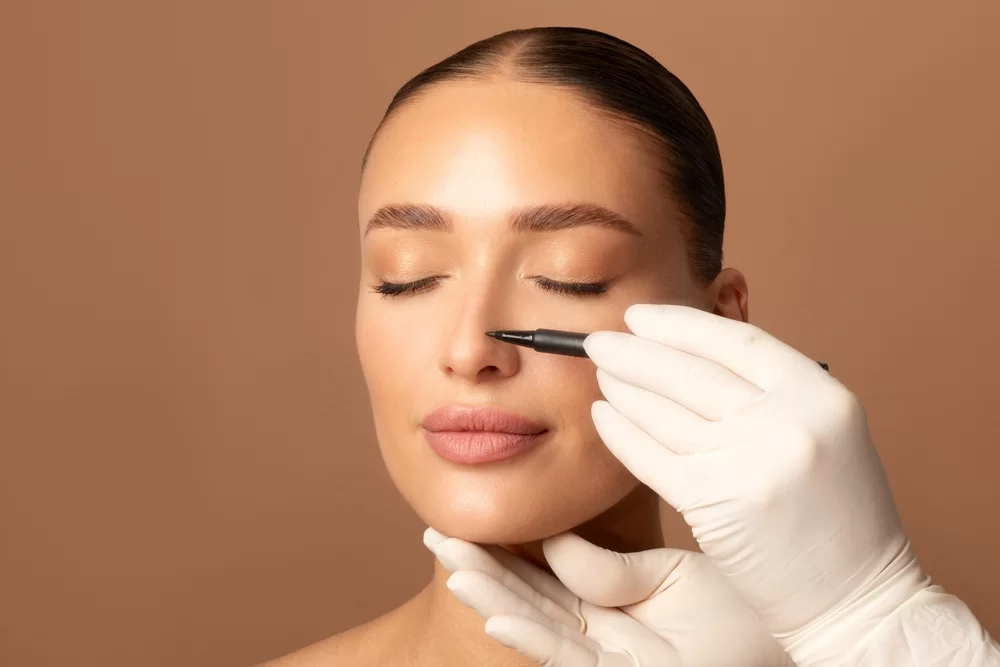Rhinoplasty

One of the most important elements of facial aesthetics is the nose. Therefore, rhinoplasty procedures hold a significant place in the field of aesthetic surgery. The goal of rhinoplasty is to reshape the nose.
Rhinoplasty refers to operations performed to improve the appearance of the nose. These procedures are applied for reconstructive purposes, correcting congenital anomalies and deformities caused by trauma.
Many people undergo rhinoplasty to correct deformities and structural irregularities in the nose, which may be congenital or caused by environmental factors. Rhinoplasty is often performed in combination with septoplasty to help alleviate nasal obstructions.
With nasal surgeries, the nasal tip can be raised or lowered, sharpened, thickened, or other deformities can be corrected. Additionally, collapsed noses can be corrected using fillers. Rhinoplasty also includes alterations to the nostrils, where narrow nostrils can be widened and wide nostrils can be reduced.
Things to Consider Before Rhinoplasty Surgery
Consulting with a professional aesthetic surgeon before rhinoplasty surgery is crucial. Patients should communicate their post-surgery expectations clearly to their doctor.
The ideal age for rhinoplasty is in young adulthood. The procedure has a high success rate, but it is essential to be aware of potential risks. Discussing all surgery-related details with the doctor before the procedure is vital for the success of the operation and to align expectations.
How is Rhinoplasty Performed?
Rhinoplasty is performed to reduce the size of the nose, reshape the nasal tip, correct the angle between the nose and upper lip, and eliminate bony protrusions.
Tissue grafts may be added to the nose. Multiple procedures can be performed simultaneously during rhinoplasty to achieve the desired shape.
Both local and general anesthesia methods are used in rhinoplasty. However, a sedative is administered before anesthesia to ensure the patient remains comfortable during the procedure. During rhinoplasty, an incision is made inside the nostrils to access the area where the aesthetic modifications will be performed. This incision allows the surgeon to reshape the nose. Then, using specialized medical instruments, the nose is corrected.
Recovery Period After Rhinoplasty
During the recovery period after rhinoplasty, some pain may occur. Keeping the head slightly elevated and applying cold compresses to the nose and eye area can help reduce swelling and bruising, speeding up the healing process. The splint applied during surgery is usually removed within a week, but its use may be extended based on the doctor’s recommendations. Rhinoplasty is performed inside the nose, meaning no visible external scars remain. The healing process occurs gradually and may take weeks or even months.
How Can I Receive Treatment?
If you submit photos of your nose from different angles using the application form on our website, your information will be reviewed by our doctors, and you will receive detailed information about your treatment process as soon as possible.
Frequently Asked Questions
Swelling and bruising may occur in the first week, but they usually subside within 10-14 days. Most patients can return to their daily activities within 1-2 weeks, but the nose takes about 6 months to 1 year to fully settle into its final shape.
Temporary breathing difficulties may occur due to internal swelling after surgery, but this usually improves within a few weeks. If the procedure includes functional corrections, breathing may actually improve over time.
In closed rhinoplasty, incisions are made inside the nose, so there are no visible scars. In open rhinoplasty, a small incision is made under the nose, but it becomes less noticeable over time. Using doctor-recommended creams and protecting the area from sunlight can help minimize scarring.